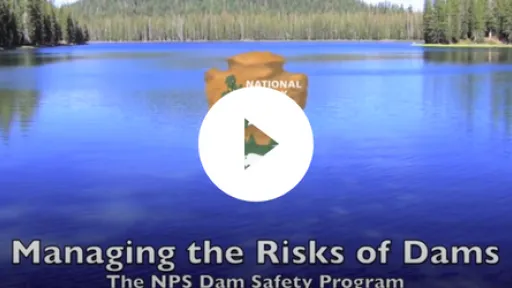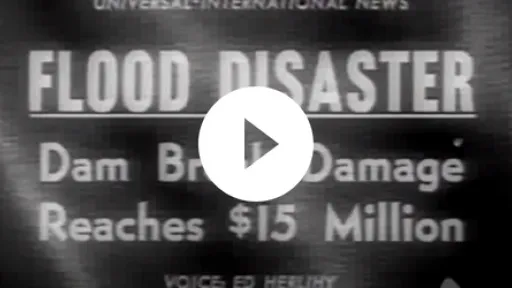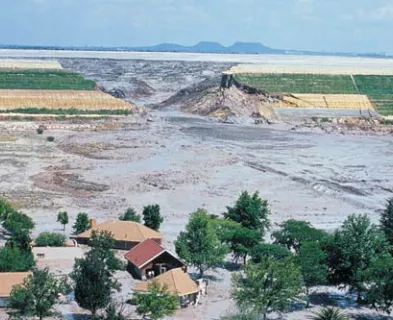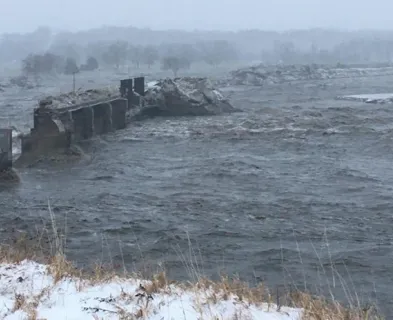The Study of Past Dam Failures and Incidents is Essential for Keeping Today’s Dams Safe.
Dams are high-energy structures that pose a destructive hazard to those downstream. Professional engineers hold paramount the safety, health, and welfare of the public by ensuring the dams under their care have an acceptably low risk of failure by using the best technical practices available to them. These practices have largely evolved from learning what did not work in the past through knowledge captured in studies of dam failures and incidents.
Unsuccessful performance – failures and incidents - sheds a bright light on which practices are lacking. Through post-event investigations, new research, and new/updated guidelines, practices are improved. Engineers have long recognized the importance of sharing and learning from dam failures and incidents. Individual case studies have been shared in the dam industry since the late 1800s through publications such as the Engineering News Record. New lessons continue to be unearthed with the investigations of recent events such as the Oroville Spillways incident, the Spencer Dam Failure, and the Edenville/Sanford Dam Failures.
Dam uniqueness contributes to the importance of learning from multiple failures and incidents. Each dam has its own original designer, construction methods, site-specific geology/hydrology/seismology, and history of performance. Dam engineers need to apply current dam safety practices to the particular elements of each dam under their care. Temporal aspects of dams add complexity in dam engineering work: many dams were designed and constructed before current practices, changes in dam ownership, key information about the dam can be lost, and there can be multiple incidents and repairs over the life of the structure.
Due diligence is shown by engineers who study dam failures and incidents related to their particular and related disciplines. For example, geotechnical engineers need to be familiar with the design, construction, or O&M practices that led to internal erosion events such as the Anita Dam Failure, the Baldwin Hills Dam Failure, the Teton Dam failure, the Quail Creek Dike failure, and many others. Part II of the 2024 book ASDSO Dam Failures and Incidents – Lessons for Today’s Dam Safety Practitioners can aid in the identification of which notable dam failures and incidents are applicable to a dam safety discipline.
Today’s dam safety engineering practice includes evaluating the risks of dams by identifying the specific ways that they can fail through Potential Failure Mode Analysis (PFMA). Key to performing this analysis is for engineers to bring their knowledge of how and why dams have failed in the past. This analysis is improved by engineers who can use their knowledge to compare and contrast past failures and incidents to the dam under study.
After the PFMA, the probability of each failure mode is estimated based in part on initiation rates from past failures and incidents. Risks are analyzed by bringing together the probability of failure with the estimated loss of life if a dam fails. Review of the loss of life that occurred in past dam failures aids in the estimation of loss of life during the risk analysis.
The study of past dam failures and incidents also reveals how to intervene when dam incidents begin.
Beyond the physical aspects, a recent advance in the dam safety industry is the need to recognize that human factors are fundamental to why dam failures and incidents occur. Research on 106 events in the ASDSO Dam Failures and Incidents – Lessons for Today’s Dam Safety Practitioners show that human factors, such as overconfidence and competition from non-safety goals (e.g., funding or schedule pressures), contributed to over half of the events. Recognition of these human factors allows dam engineers to strengthen their professional engineering practice by interacting with dam owners, regulators, and others in ways that keep the safety of their dams of utmost importance.
Dam safety areas that benefit from the study of past dam failures and incidents include:
- Analyzing the loadings (static, hydrologic, and seismic) on the dam
- Modeling assumptions and methods can be refined using data from dam failure and incident events.
- Identifying flaws in dams that may not be observable in a visual dam inspection (such as potential for spillway slab uplift).
- The need for redundancy
- Potential failure modes
- Initiation rates and thresholds
- Mechanisms of progression
- Breaching characteristics
- Dam failure inundation mapping
- Estimating loss of life
- Accounting for dam complexity
- Evaluating uncertainty and confidence in risk analysis.
- Developing a dam safety case for taking no action, actions to further evaluate an issue, or to take risk reduction actions (such as repairs).
- Identifying unusual vulnerabilities such as spillway clogging, landslides, ice runs, and operational aspects.
Cataloging dam failures and incident cases began internationally in the 1970s. Since the 1990s, the dam safety profession has developed terminology that applies to dam failures and incidents.
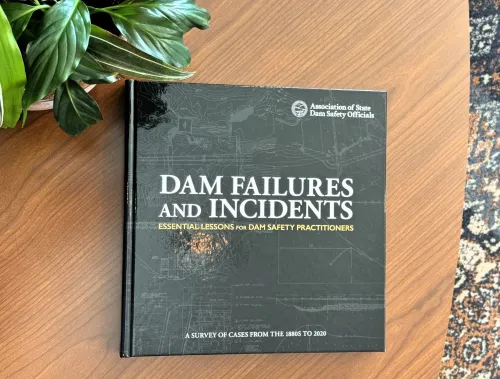
Definitions
The DamFailures.org glossary includes terms relevant to the study of dam failures and incidents, which are repeated here for convenience.
- Potential Failure Mode: When analyzing the safety of an existing dam during a safety/risk analysis of the dam, the term Potential Failure Modes (PFMs) is used. A potential failure mode is a physically plausible process for dam failure resulting from an existing inadequacy or defect related to a natural foundation condition, the dam or appurtenant structures design, the construction, the materials incorporated, the operations and maintenance, or aging process, which can lead to an uncontrolled release of the reservoir. A failure mode typically follows the process: load, flaw, initiation, progression, unsuccessful intervention, breach, flood, and consequences.
- Dam Failure: The uncontrolled release of the reservoir (breach in dam) often leading to downstream flooding, damage and sometimes, loss of life.
- Dam Incident (Accident): A problem at a dam that initiates and threatens to fail a dam but does not do so. Often there is damage to one or more dam components. All dam failures begin as dam incidents. Dam incidents can be minor or major. Major incidents and failures are the focus of this lesson learned.
- Intervention: Efforts during a dam incident to attempt to stop the progression from failing the dam. Intervention may be successful (the dam does not fail) or unsuccessful (the dam fails). Unsuccessful intervention may slow the breach in the dam creating time for warning and evacuating people downstream. Special care should be taken to do no harm when attempting to intervene during a dam incident. In some cases, intervention efforts have actually worsened the situation.
Benefits
When dam failures and incidents occur (and if they are properly investigated), they can leave a broad-ranging record of many dam safety elements. By comparing these events in each element with current practices, gaps can be identified. These gaps at a variety of levels (e.g. dam component, dam type, design/construction practice) point to the need to research and improve areas of current dam safety practices.
The study of past dam failures and incidents offers the following benefits:
- Graphically educates the non-engineering public and their leaders that dams (even though they may appear benign) are high energy storage systems that can present a major hazard to people downstream. Dam safety programs are public safety programs that need support from the public and their leaders. It is incumbent on dam safety engineers to educate others who may not be engineers but who have responsibility for the safety of dams (such as dam owner executives or senior government leaders). Case studies show to both executives and leaders not only the potential tragic and damaging consequences of dam failures but the potential major losses of dam benefits to their organizations. Past cases show the many types of consequences, including loss of life, destruction of roads/buildings, loss of jobs, and damage to land. Dam failures can also negatively impact the confidence in and reputation of the dam owner.
- Shows dam owners that dam failures and incidents do occur and that dam safety programs are crucial public safety programs that require long term and ongoing investments in the operation, maintenance and safety of the structures to continue to receive the benefits provided by the dam.
- Improves analysis of the safety of existing dams – ensuring dams are evaluated for vulnerabilities and operated/maintained and repaired to be resistant to both common and unusual potential failure modes.
- Improves dam or dam repair designs through incorporation of state of practice features and multiple lines of defense (redundancy).
- Avoids construction practices that lead to dam vulnerabilities.
- Provides for better understanding of the many factors that when combined lead to dam failures such as human factors, environmental factors (such as weather), operation and maintenance factors, and organizational/social factors.
- Serves as real-life, impactful training examples for dam-related staff.
- Provides better recognition and appreciation of the importance of early detection and notification of emerging dam incidents.
- Leads to improved intervention through knowledge of past response methods (both successful and unsuccessful).
- Informs dam owners that dam failure consequences are serious and that they need to put the resources into their dams to keep them well operated and maintained.
- Shows that dams require long term attention, inspection, operation, maintenance, and repairs to keep them safe.
It is especially important that dam owners and their engineers research the history of their own dams for past incidents. Past incidents at dams have a relatively high likelihood of recurring. For example, Spencer Dam in Nebraska, failed from a river ice run in the 1930s and was again damaged by an ice run in the 1960s. The current dam owner had little knowledge of these past events and when a major ice run occurred in 2019, the dam failed. Had the owner been aware of the past incidents they could have performed risk mitigation.
Sources
There is no comprehensive database of all dam failures in the U.S. The following sources are available to learn more about dam failures/incidents:
DamFailures.org (ASDSO)
- DamFailures.org has over 50 dam failure/incident case studies. The lessons learned section of DamFailures.org synthesizes lessons from multiple failures/incidents for a number of topics.
- For a deeper understanding of particular dam failures and incidents, the resources section in each DamFailures.org case study includes photos, videos, and other resources.
Additional ASDSO Sources
- The ASDSO Incident Database includes information on over 1300 failures and incidents.
- A section of the ASDSO website called 'Dam Failures and Incidents' provides a good introduction to dam failures and the most common failure causes.
- The online Dam Safety Resource Database includes many technical papers on individual failures/incidents.
- In 2024, ASDSO published a 320-page book titled Dam Failures and Incidents - Essential Lessons for Dam Safety Practitioners, which includes data, photos, and narrative stories for 106 dam failures.
- ASDSO’s online Dam Owner Academy includes a 7-minute video on dam failures.
Other Sources
- Dam failure historical books include Dam Failures USA I and II and Dams and Public Safety (published by the Bureau of Reclamation). These books can be found on rare book seller websites.
- The International Committee on Large Dams (ICOLD) surveyed dam owners in the 1970 on dam failures and incidents.
- The Stanford National Performance of Dams Program (NPDP) has a database of dam failures and incidents searchable by dam name.
- The Bureau of Reclamation Consequence Estimation Methodology includes dozens of dam/levee failures and flood case studies.
Individual Dam Failures & Incidents
- Many books have been written on notable failures. Videos and films have been produced as well for several failures.
- Detailed and reliable information about individual dam failures/incidents can be found in dam failure investigation reports. There are over 45 dam failure investigation reports in the Resources section of DamFailures.org.
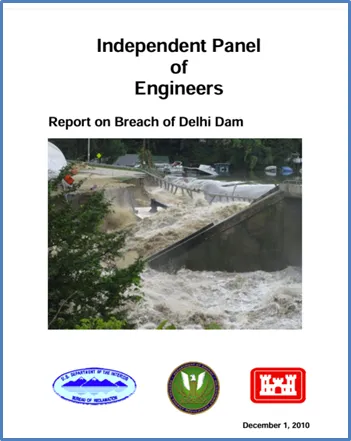
Learning: Audience, Content and Methods
When planning to conduct training around the lessons from dam failures and incidents, consideration of the audience and learning objectives are of primary importance.
General Audiences
General audiences will need higher level description of dam failures/incidents and less technical content.
Choose dam failures/incidents that are for dams similar to the dam(s) that the audience works on. If, for example, the audience is workers who maintain small embankment dams, studying dam failures such as Spaulding Pond, Anita Dam, and Lawn Lake Dam would be good choices. General audiences are receptive to dam failure videos (see below).
EAP Exercises
Dam failures and incidents are important to show at the beginning of Emergency Action Plan tabletop and functional exercises. Dam Failure and Incident videos, such as Lawn Lake, Baldwin Hills, offer a lay audience improved understanding of the potential hazard posed by dams and the importance of warning and evacuating people in the dam failure flood path (the Emergency Manager in the Edenville Dam failure event credited the emergency action plan exercise with saving lives). The St. Francis Dam Case Study shows mass tragic loss of life that can occur when a major dam fails unexpectedly with no warning and evacuation of the downstream population.
Technical Audiences
Technical audiences such as engineering students, geologists, geotechnical engineers, structural engineers, and hydrologists benefit from the study of dam failures and incidents related to their fields of study or disciplines. Part 2 of the Dam Failures and Incidents - Essential Lessons for Dam Safety Practitioners includes lists of case studies by dam type, feature (e.g. spillway or outlet works), human factors, loadings (e.g flood or earthquake) failure modes, and level/type of consequences. The introduction of the book includes the role of studying past dam failures and incidents to improve the analysis of existing dam potential failure modes and risk assessment.
Senior Executives
Top leaders of organizations with dams or dam safety responsibility are critically important for the safety of their dams. They prioritize the resources necessary to inspect, monitor, evaluate and repair dams. They need to be cognizant of not only the damage their dams can cause downstream if they fail, but also that a dam failure results in the loss of the benefits to the organization. Choosing dam failure/incident case studies of similar types/benefits to the dams in the organization’s inventory makes education of senior leaders more relevant and impactful.
Methods
- Lunch and Learn: Because there are dozens of documented dam failures and incidents to learn from and a need to educate a wide audience, one large dam owner decided to implement dam safety “lunch and learn” virtual sessions to share one failure/incident every three months.
- Books: The 106 case studies in the 2024 ASDSO book, Dam Failures and Incidents – Essential Engineers for Dam Safety Practitioners, can be read one failure at a time. The 1980s book Dams and Public Safety by the Bureau of Reclamation (available from used book websites) includes narrative descriptions of 43 dam failures from ancient times up to the late 20th century.
- PowerPoints: PowerPoint presentations are often used by engineers to explain dam failures and incidents. PowerPoint’s ability to incorporate text, photos, animation and videos provides the presenter with multiple tools to share multiple aspects, or sequential or in-depth aspects of dam failures and incidents with the audience.
- Conferences: Many dam safety industry conferences include presentations and technical papers about past and recent dam failures and incidents.
- Videos and Movies: An easy and impactful way to understand how/why dams fail and their consequences is to watch dam failures and incident videos, such as:
- Managing the Risks of Dams (the Lawn Lake Dam Failure) [14 Minutes]
- Baldwin Hills Dam Break Newsreel [3 Minutes]
- St Francis Dam Failure - A Short Documentary [11 Minutes]
- Johnstown Flood (South Fork Dam) Documentary [1 Hour and 24 Minutes]
- The Dam Busters (Eder and Mohne Dam failures) [Full Length Movie]
- The Wild Story of the Taum Sauk Dam Failure [21 Minutes]
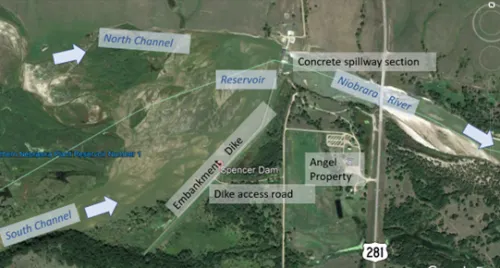
References
(1) ASDSO. (n.d.). Dam Failures and Incidents. Association of State Dam Safety Officials.
(3) ASDSO. (n.d.). Dam Incident Database. Association of State Dam Safety Officials.
This lesson learned was peer-reviewed by Paul Risher, P.E. (U.S. Army Corps of Engineers) and John France, P.E. (JWF Consulting).
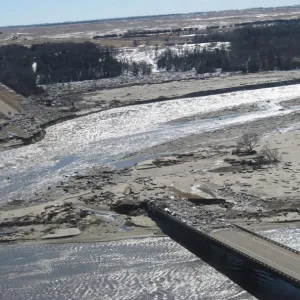
Spencer Dam (Nebraska, 2019)
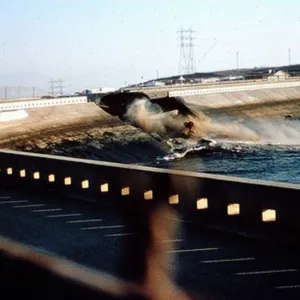
Baldwin Hills Dam (California, 1963)
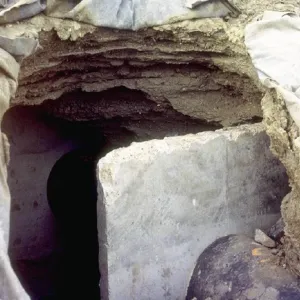
Anita Dam (Montana, 1997)
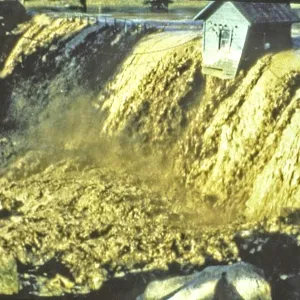
Lawn Lake Dam (Colorado, 1982)
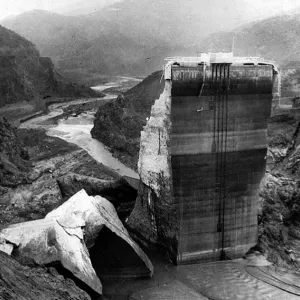
St. Francis Dam (California, 1928)

Edenville Dam (Michigan, 2020)

